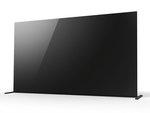It's been 40 years since the CD appeared. Since then, "optical discs" that read signals with laser light have evolved into laser discs, DVDs, and Blu-rays, and have been used for various purposes such as recording and distributing music and video. Recordable media such as CD-R and DVD-R also appeared and are still in use today. However, things that have form will eventually break. Optical discs, which use laser light to change dyes to record signals, may change dyes due to sunlight, and performance degradation will inevitably occur with continued use. CD-R, which appeared at the earliest as a recordable optical disc, is considered to have become unreadable after several decades depending on the storage conditions.
Old CD-Rs may be degraded and unreadable However, not all recordable discs are negatively affected by sunlight, such as DVD-RW discs with metal recording surfaces that are less affected by ultraviolet rays. The results will vary depending on whether consideration is given, such as storing it in a cool and dark place, or storing it vertically to prevent warping. Above all, it is the "front", that is, the label side, that causes the readability of recordable optical discs. While the back/recording surface is handled with care, the label surface, on which characters are written and stickers are attached, is easily scratched. Even if the damage is invisible, if it reaches the recording layer under the label surface, it will cause problems such as peeling, making the disc unreadable. In the case of CDs in particular, the recording layer is only 0.01mm from the label surface, so the label surface must be handled delicately. The cause of not being able to read the CD-R may be a scratch on the label surface, right?